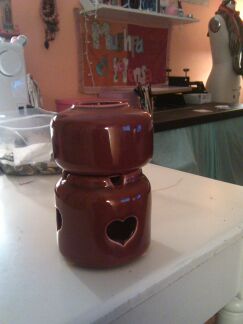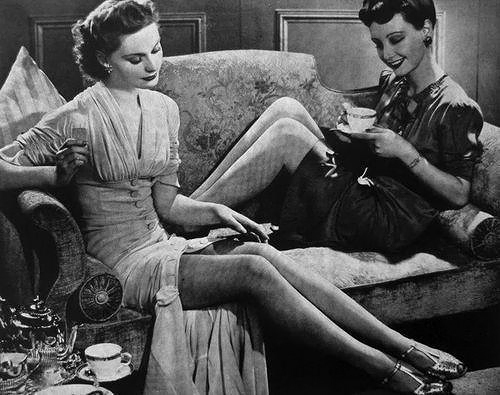Mensa and I are blessed by the Universe daily. It occurs so often we sometimes take for granted all the little miracles happening all around us. We were talking about it last night, about how we need to acknowledge them, recognize them for what they are, validate and appreciate. :]
For example, I was thinking the other day after picking up some eucalyptus, rosemary and tea tree oil* for Mensa’s allergies that we should start doing some aromatherapy. It reminded me when I was the body care buyer for Whole Foods and was in charge of buying essential oils. The reps gave me oils to sample and some really nice ceramic aromatherapy candle essential oil burners. I have no idea where they have gone over the years, but I thought we should get one and get back into it. The next thing you know I get a text from Mensa with this photo below.
She had found this ceramic aromatherapy essential oil burner on the sidewalk, clean and in prefect condition. The funny thing was I had never even mentioned that I was thinking about this. Little things you see.
Then we were walking around Brooklyn the other day and found some books. One of them was, “Go Green, Live Rich“, by David Bach. Green, check, rich, not yet but lets see what he has to say. Rewards for doing the right thing sounds good to us. :]
The first chapter is about measuring your carbon footprint. The site David Bach recommends is www.earthlab.com/createprofile. I went and set up a profile and answered their questions. My results are below:
It’s nice if you set up a profile because then you may calculate your ECP (Earth Conservation Plan) and see what the averages are in your area, state and country. I’m super competitive. :]
Lastly, you may set up pledges to do more amazing things in your life. You start out checking what you already are doing and then from there grow.
– Mushpa
*These particular oils are good at clearing you up. You can include myrtle oil but it costs a fortune, 30 something dollars for 15ml, so we skipped that one. Plus, you can only find it online, even in NYC. As a quick aside this is what you do to help with allergies, fill a saucepan with water and bring to a boil. Turn off the heat, take the pan off the stove top and add 3 drops eucalyptus essential oil, 3 drops rosemary essential oil, 2 drops myrtle essential oil and 2 drops tea tree essential oil. Tent a bath towel over the saucepan (keep your face just far enough away from the steam to avoid burns) and inhale deeply for 5 to 10 minutes. Repeat 1 to 3 times a day.





